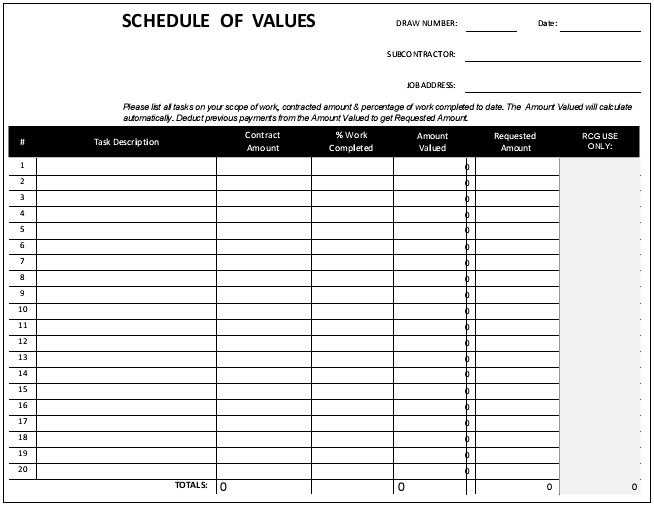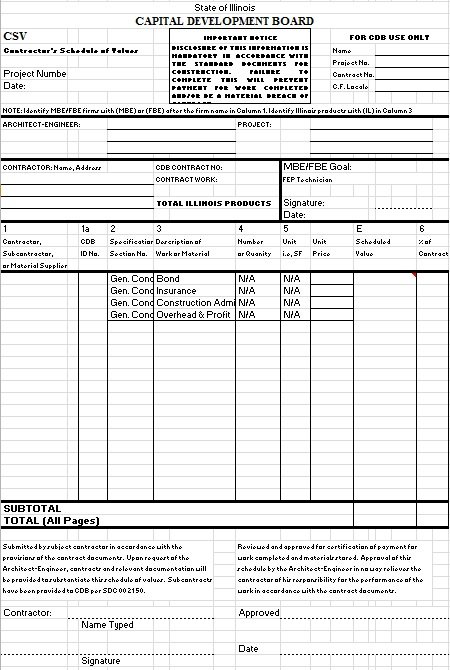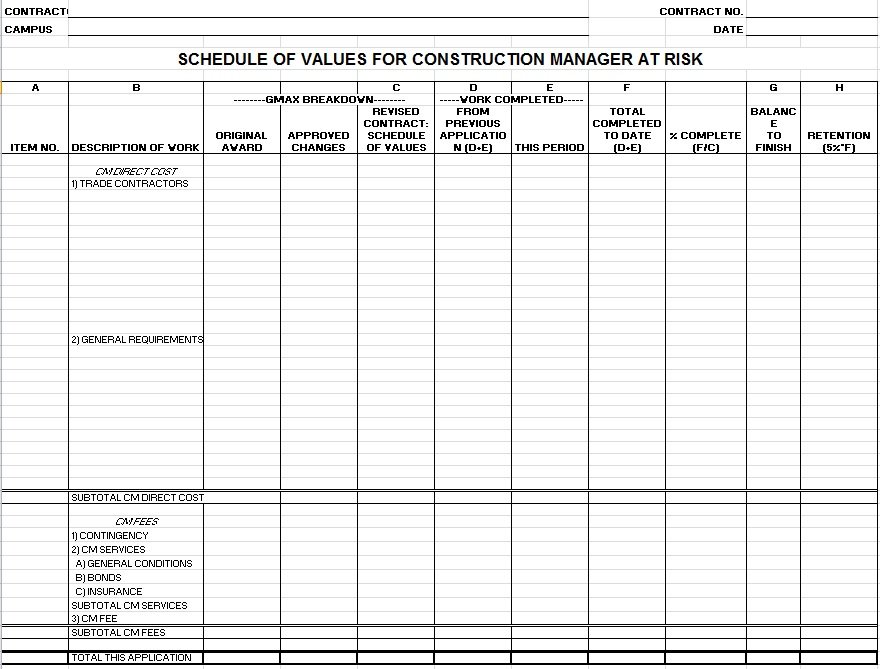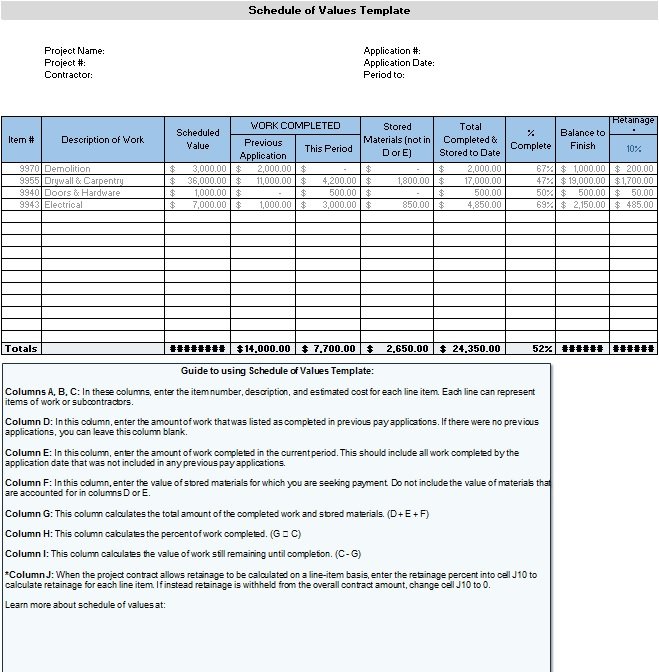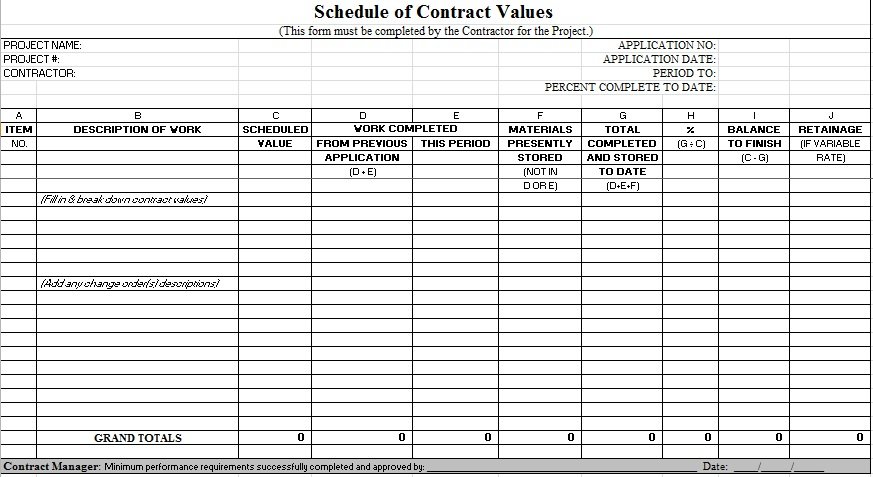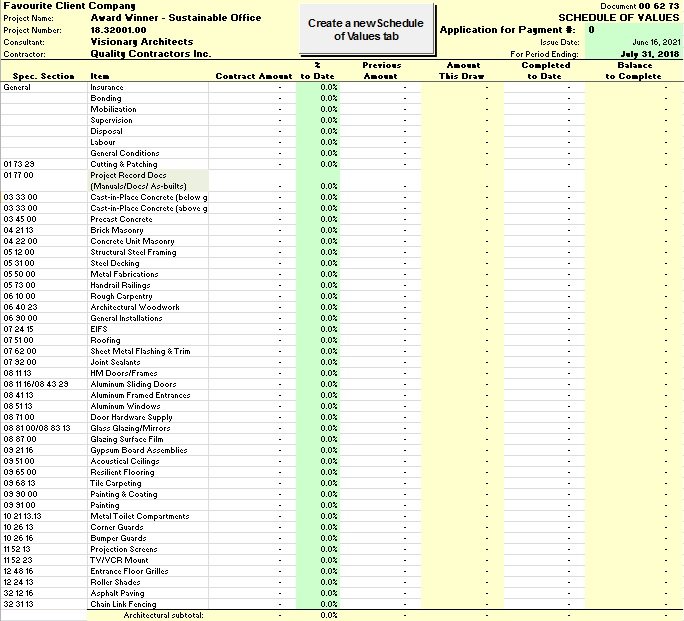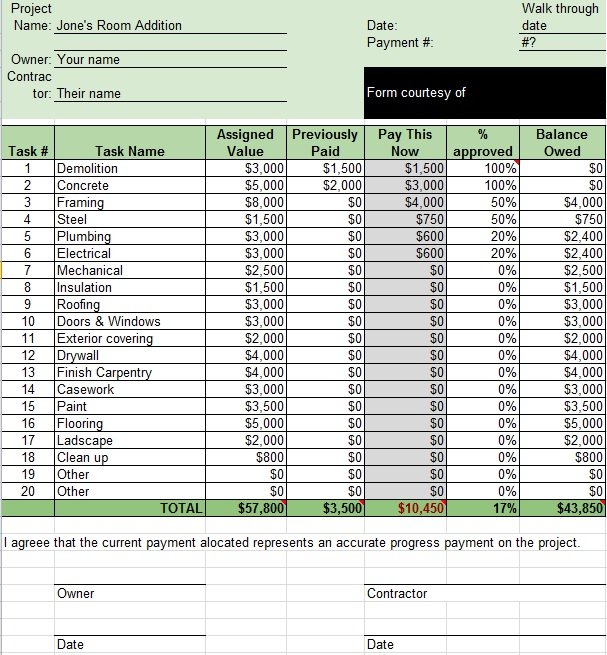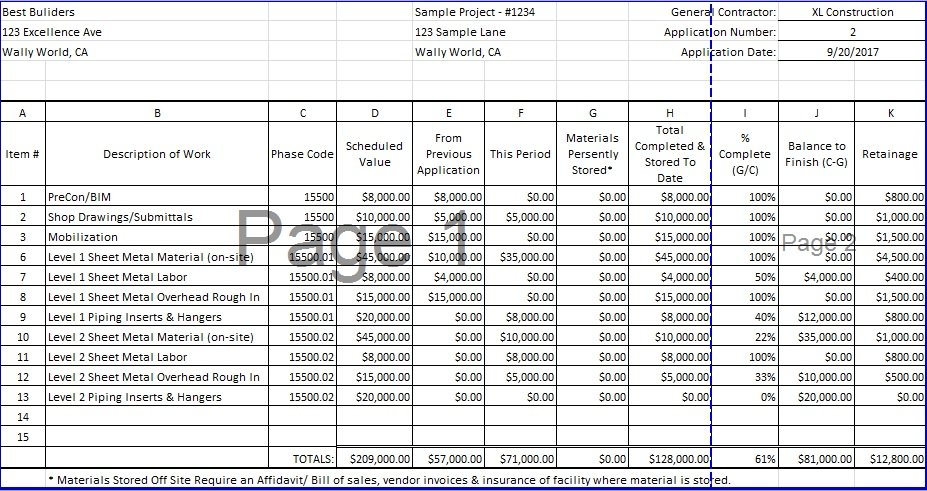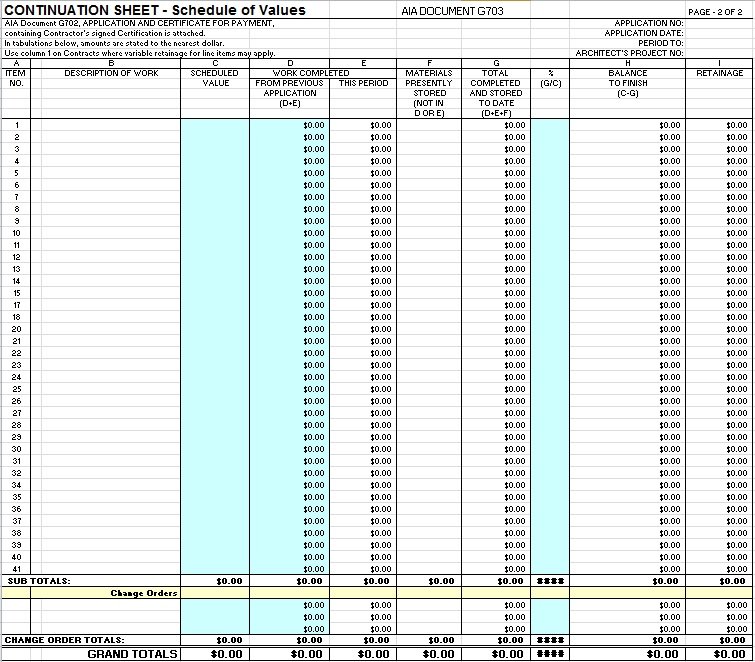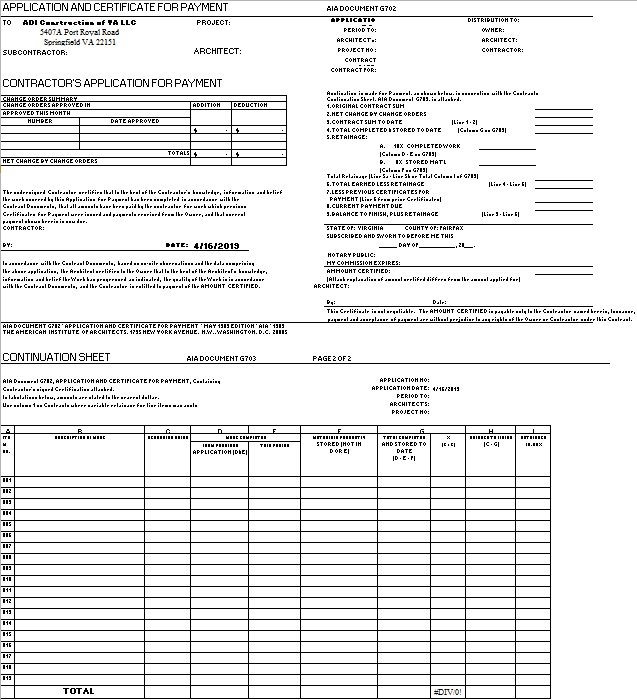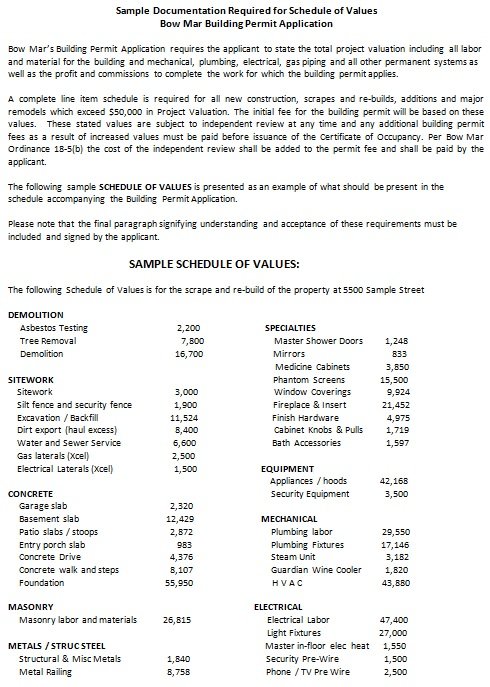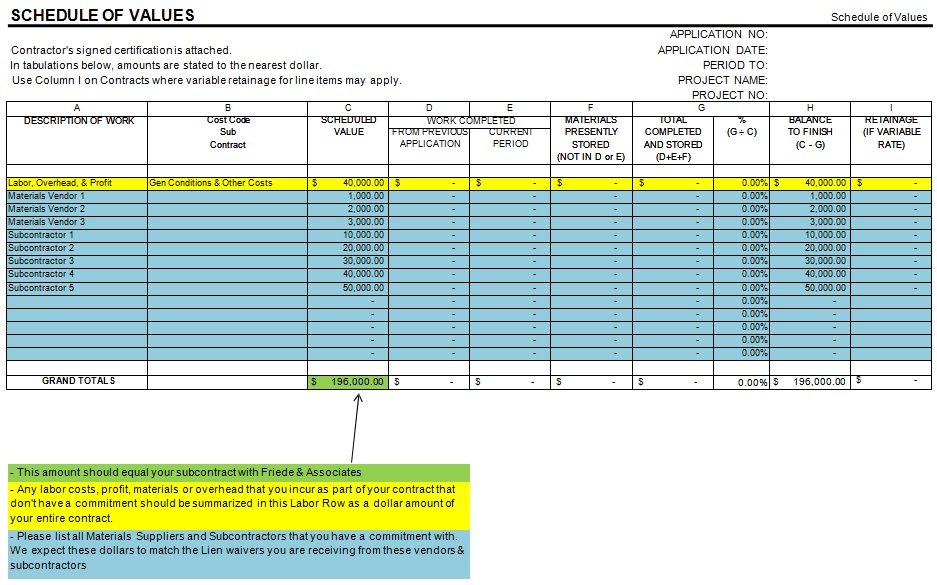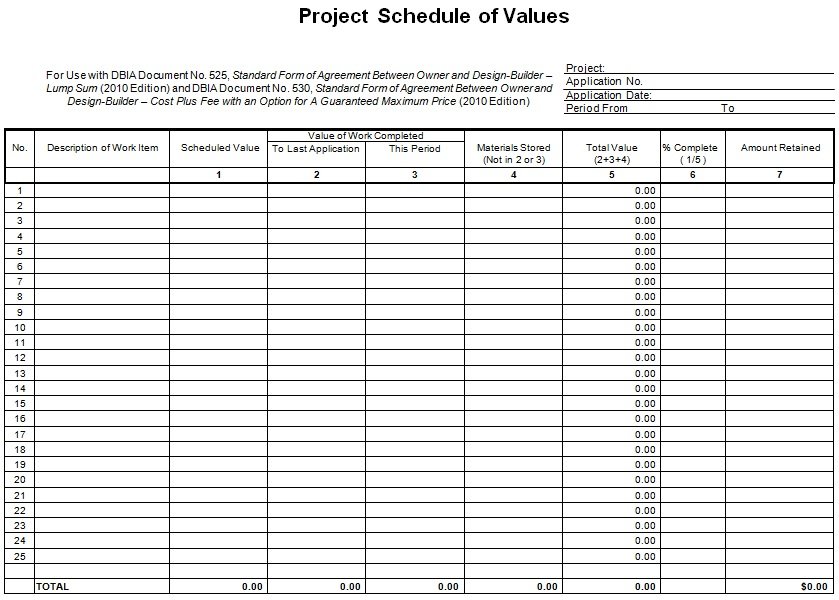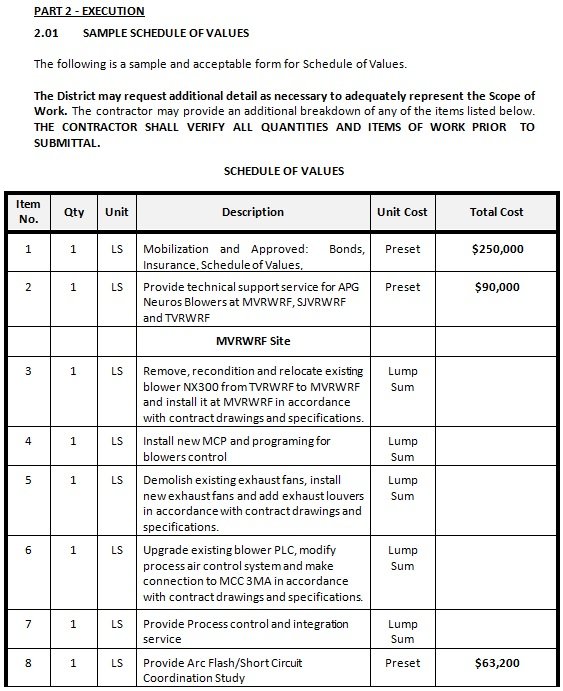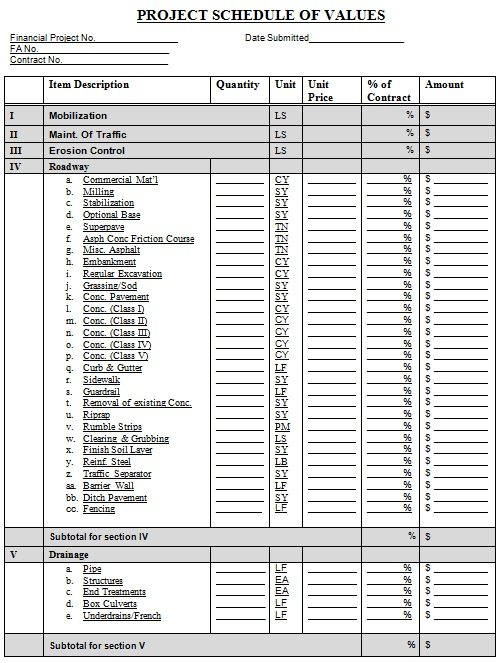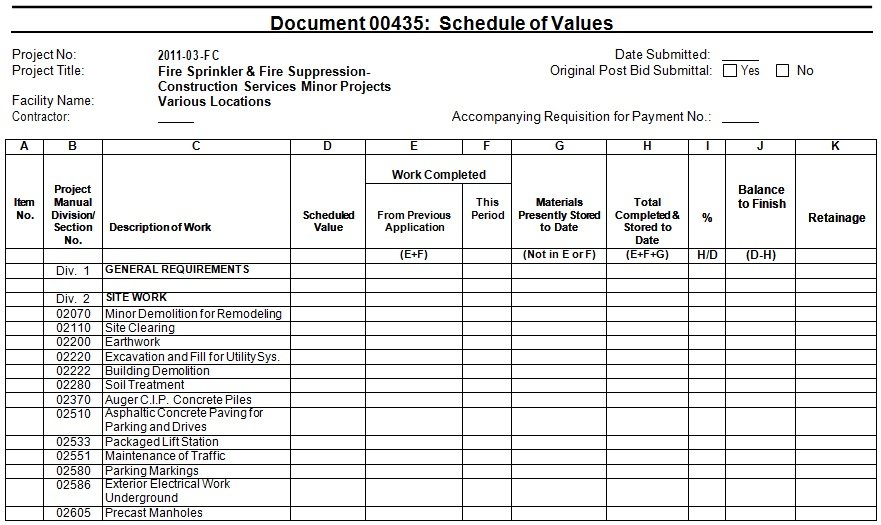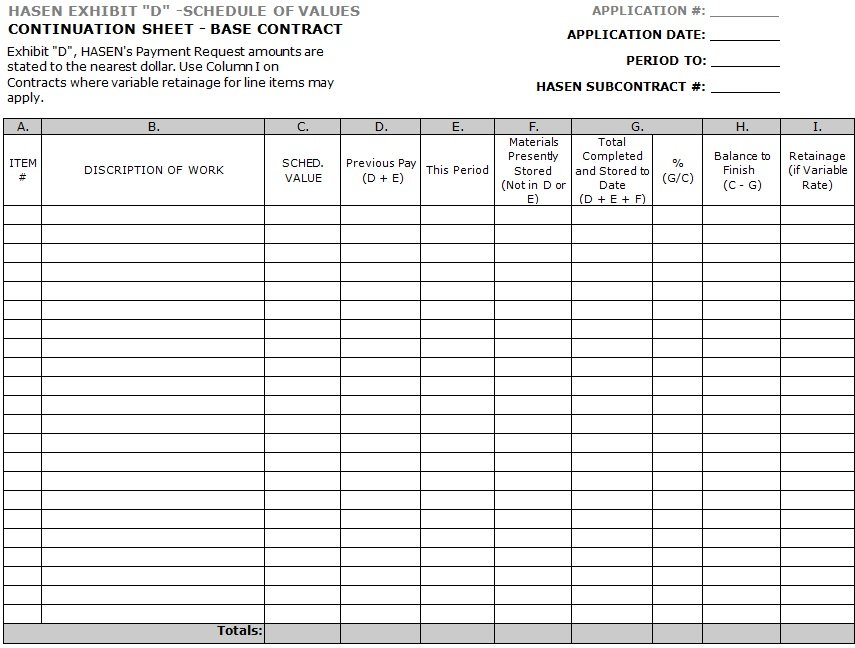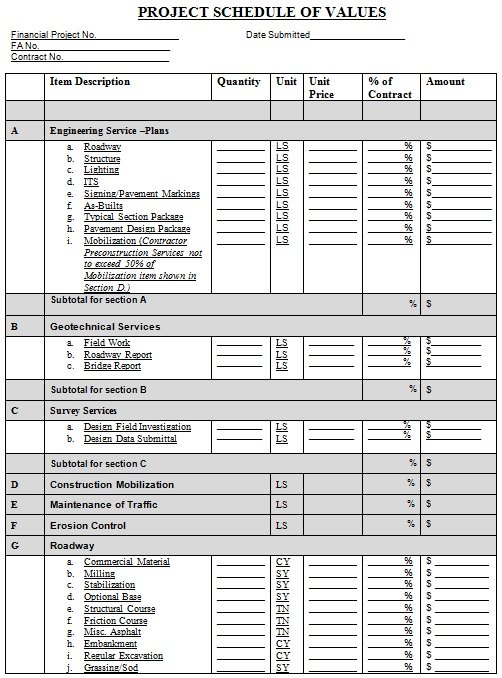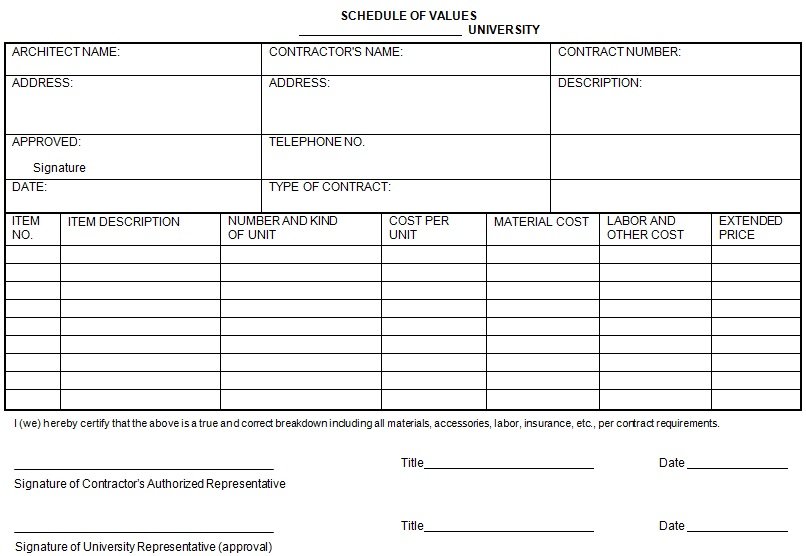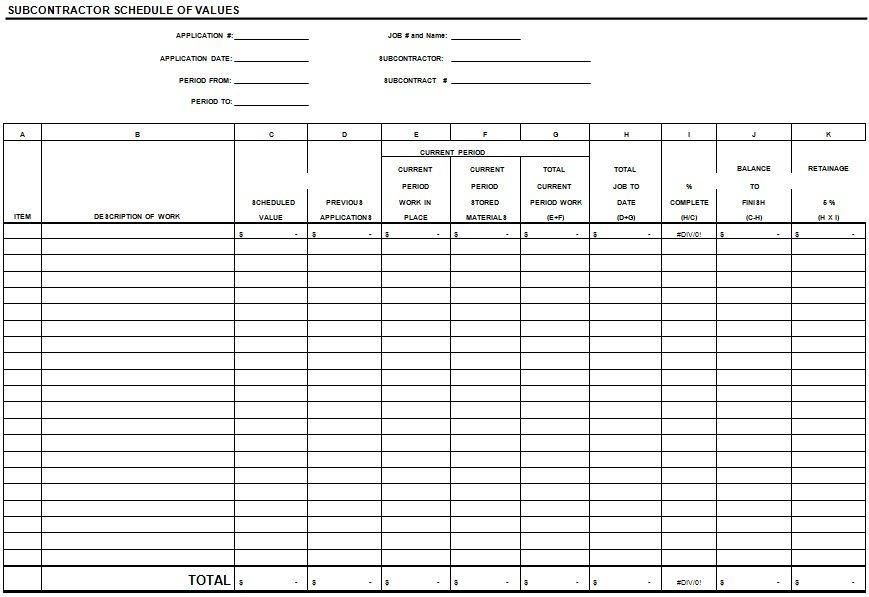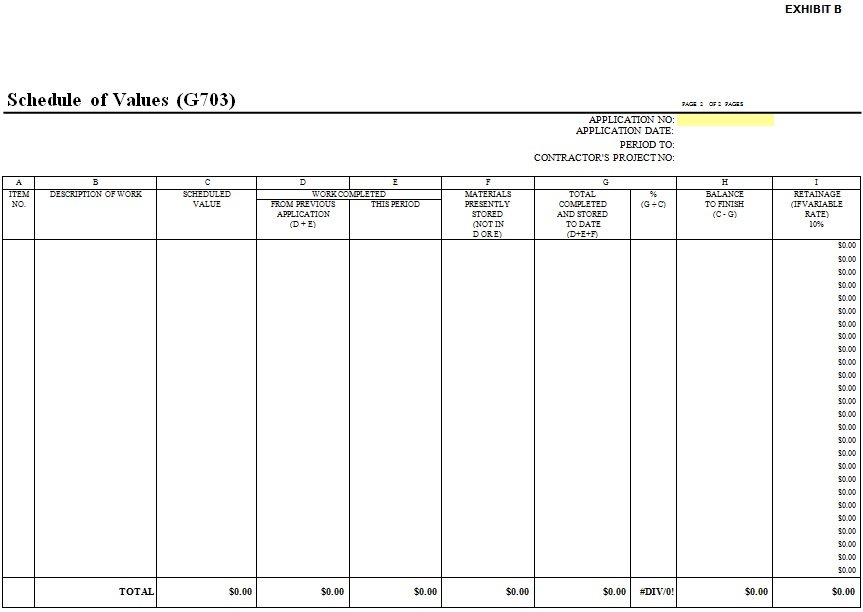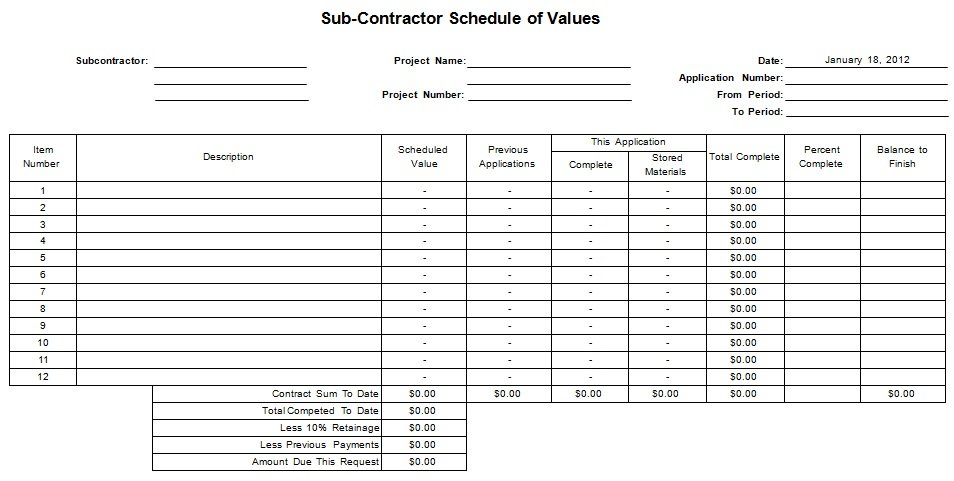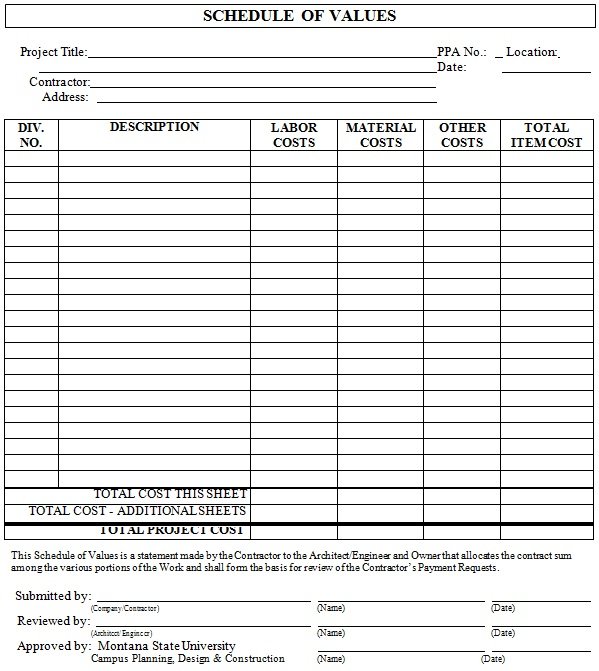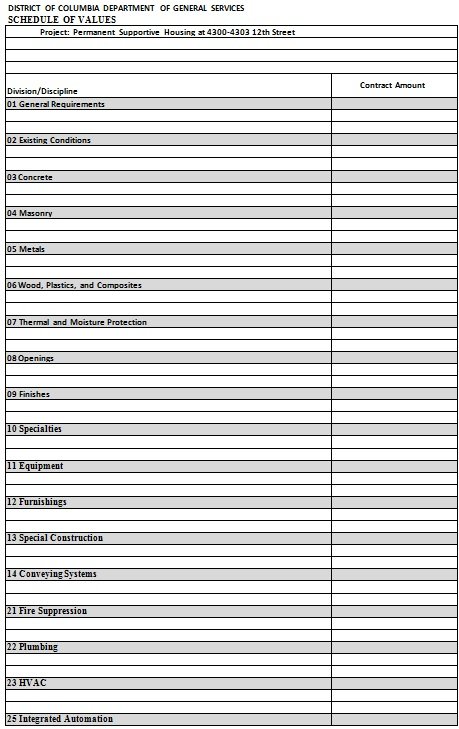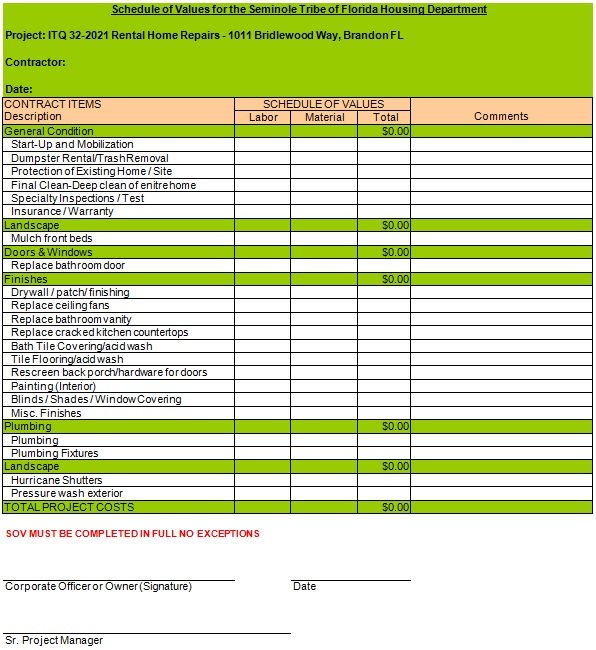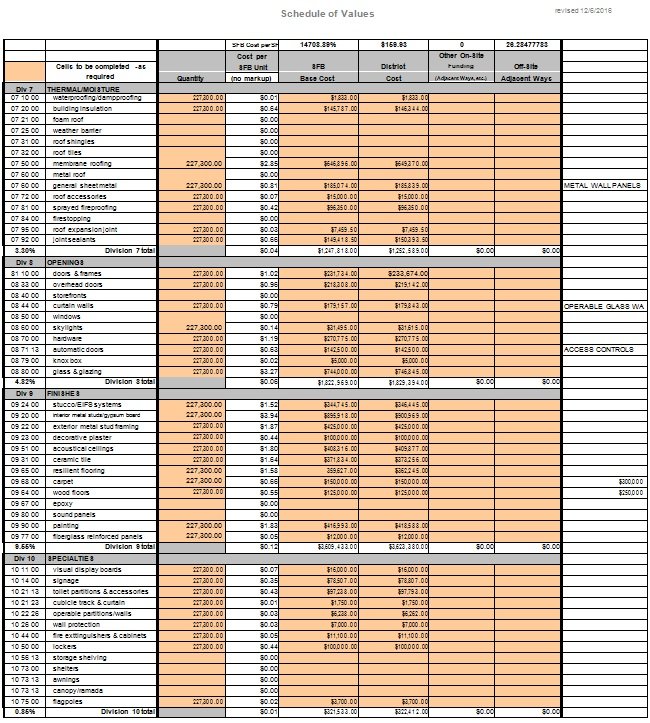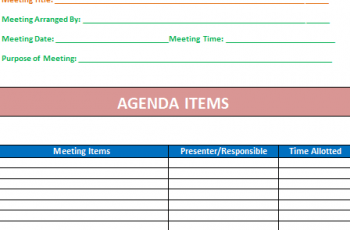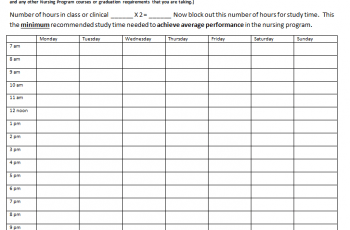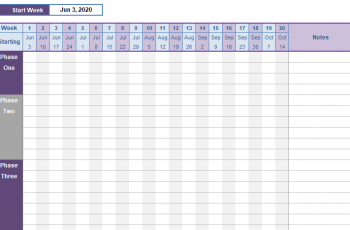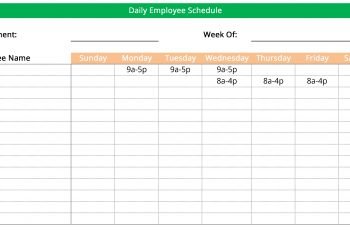A schedule of values template is a document that contains the details of the cost of each phase of the project. This may include finer details such as the kind of work, things to be done, and the time within which it must be accomplished. They indicate the exact cost of the entire project when all the work items are added together.
What to include in a schedule of values?
The contractor should include the following details in a schedule of values in order to make sure a smooth progression of any construction project; You may also like employee schedule templates.
The head
It is the top part of the schedule of values template that includes the following;
- Project’s name: the name of the project is provided by the owner as mentioned in the contract document
- Project number
- Contractor’s name
- Contract application number
- Contract application date
- Expected finishing period
The body
The main part of the schedule of values spreadsheet is the body and it should include the following columns;
- Item number: for easy identification, each item of work must be numbered by the project managers, auditors, and engineers. In terms of the number of digits used, the numbering could take any form. You can use three digits such as 004, 005, 006, and so one. Also, four digits can be used like 5001, 5002, and so forth, or an even higher number of digits.
- Work description: it provides explanation of works expected to be carried out in each phase. This may contain earth moving works, piping and electrical installations, demolitions, and so on.
- Scheduled value: The scheduled value has the amount of money assigned to each item of work that covers the whole project. Depending on the amount of work involved, this can range from a few hundred dollars to thousands or ten thousand.
- Completed works: in measuring the amount spent against the projected budget, the project progresses by phases making the inclusion of completed works important. The accomplished works column can be further distributed into two columns. The first column highlights the previous schedule of values to indicate how much the spending in the previous phase. While, the current schedule of values indicates the amount assigned for the current or ongoing phase.
- Materials in for non-completed work: for easy accountability, this item shows the value of materials in the project’s store. The money shall be used either in the current phase or in the next phase of the project is the meaning of non-completed work materials. You may also see the project schedule template.
- Materials in store for completed work: this column reflects the value of money spent so far in all the past phases of the project. In terms of percentages, it is used to calculate the progress of the project.
- Percentage of completed items of work: this column specifies how far the project has progressed. It makes it easier to know the percentage of the remainder. The amount of time left to the project completion, the project owner and the contractor can be able to measure that time.
- Balance to finish: Balance to finish indicates the amount of money available till the accomplishment of the project. From here, the contractor can measure whether they have enough money to complete the project or they may require to cut on some costs or arrange for further financing.
- Retainage: the amount of money held back as an incentive to the contractor till the project is accomplished is referred as retainage.
- Totals: it is a row that indicates the total of each of the aforementioned items.
Conclusion:
In conclusion, a schedule of values template is an important tool that makes a cash flow smooth in the life of a project. The project owner and engineers get a quick overview of the budget expenditure against the total allocation with the help of this document.

